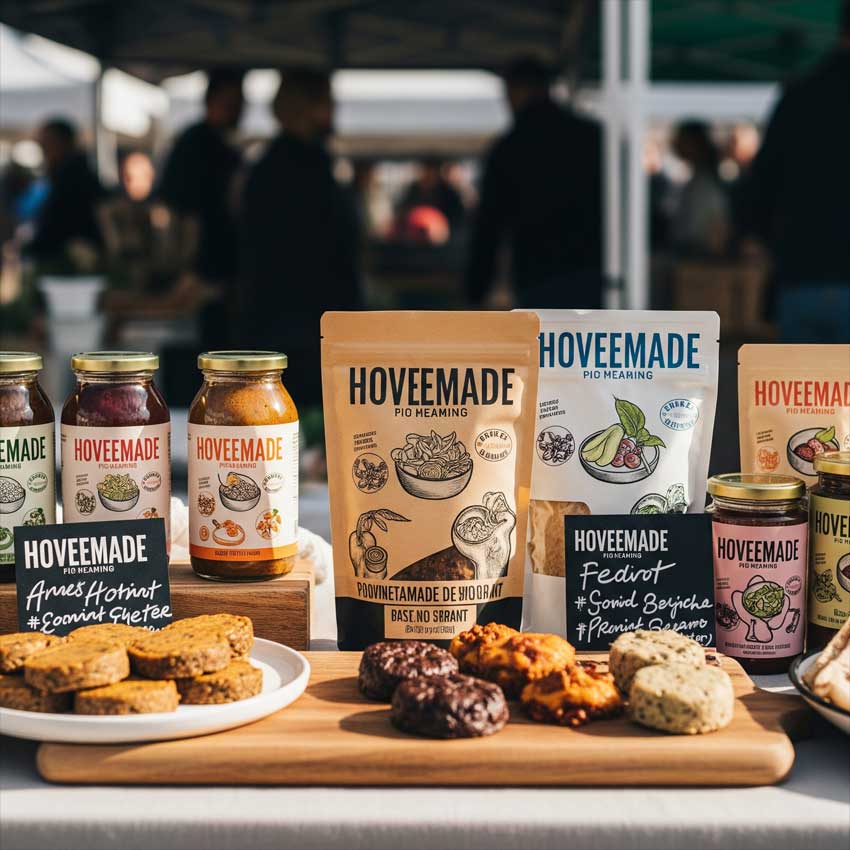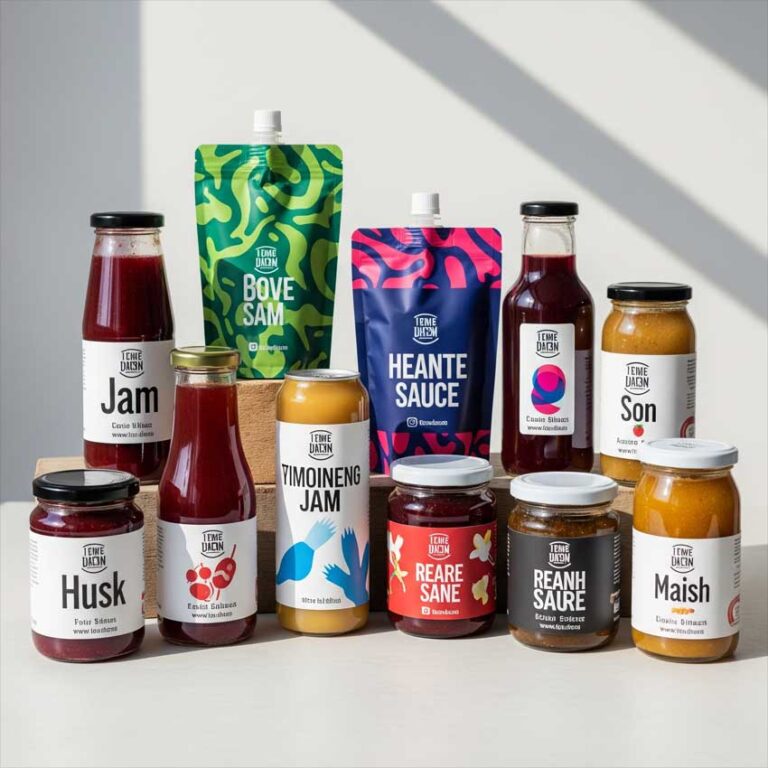Premium Biz Post – In today’s highly competitive culinary industry, having a strong homemade F&B branding strategy to break into market is no longer optional—it’s essential. Whether you run a small food stall, a home bakery, or are just starting your own food and beverage business from your kitchen, your brand is what will set you apart from a sea of competitors.

From the packaging design to your social media presence, every detail counts in building a solid and memorable food brand that appeals to your target audience. The market is saturated with creative and mouthwatering offerings. Without proper branding, even the most delicious product risks getting lost in the crowd.
In this article, we’ll explore the essential elements that make up an effective homemade F&B branding strategy and how you can use these tactics to confidently step into the market—and stand out.
read more : “Healthy Lifestyle: The Essential Key to Balanced Body and Mind“
Why Branding Matters in the Homemade F&B Industry
Many small food entrepreneurs believe that product quality alone is enough to drive success. While taste and consistency are indeed critical, branding shapes the way customers perceive your product before they even try it. It builds trust, conveys your story, and makes your offering recognizable.
Think about it—how many homemade cookies or drinks are out there? What makes customers choose yours? The answer often lies in your brand identity: your name, packaging, values, and customer experience.
1. Define Your Brand Identity
The first step in a solid homemade F&B branding strategy to break into market is defining who you are. Ask yourself:
- What do you want your brand to be known for?
- Are you positioning your product as artisanal, budget-friendly, health-conscious, or luxurious?
- What story are you telling through your product?
Your brand identity should be consistent across all channels. That includes your logo, color scheme, typography, packaging, social media tone, and even customer service approach. The more cohesive and authentic your branding, the more likely customers will remember—and return to—you.
Example: If you sell homemade vegan smoothies, your brand identity might center around sustainability, clean living, and freshness. Everything from your label design to your Instagram captions should reinforce those values.
2. Know Your Target Market
Successful branding doesn’t happen in isolation. You need to know exactly who you’re talking to. Conduct basic market research to understand your potential customers:
- What age group are they in?
- What are their buying habits?
- What food trends are they following?
- What platforms do they use to discover new food products?
Once you know your audience, tailor your message and visual branding to appeal directly to them.
Example: A homemade dessert brand targeting Gen Z may want to focus on playful, vibrant visuals, trendy flavors, and TikTok-friendly packaging.
3. Create a Unique Brand Name and Logo
Your name and logo are your first impressions. Choose a name that’s:
- Easy to remember
- Relevant to your product
- Not already in use by another business
Your logo doesn’t have to be overly complicated. Simple logos are often more memorable and easier to scale across packaging and digital platforms.
Make sure to test your logo on different backgrounds, including your packaging, Instagram posts, and product labels, to ensure visibility and legibility.
4. Focus on Packaging That Pops
For homemade food and beverage businesses, packaging plays a huge role in customer perception. It’s not just about keeping the product fresh—it’s about communicating your brand identity.
Your packaging should:
- Clearly display your logo and brand name
- Use colors and fonts that reflect your identity
- Include important product information (ingredients, expiry date, storage instructions)
- Be practical and user-friendly
- (If possible) Be eco-friendly or reusable—this is a major plus for modern consumers
Pro tip: Handwritten notes or QR codes that link to your story or recipe ideas can add a personal touch that customers appreciate.
5. Build a Digital Presence
You don’t need a huge marketing budget to build visibility. In fact, some of the most successful homemade F&B brands started on Instagram or TikTok with just a smartphone.
Here’s what you can do:
- Create an Instagram page or TikTok account showcasing your products
- Post regularly with high-quality images and videos
- Share behind-the-scenes content—this builds trust and relatability
- Use relevant hashtags and engage with your followers
- Encourage user-generated content (ask customers to tag your brand)
Having an online presence allows people to find you, interact with your brand, and ultimately place orders. Make sure your contact info or ordering system is easy to access from your bio.
6. Start Small, but Stay Consistent
When starting out, it’s okay to have a small menu or limited production. What matters more is delivering consistent quality and branding across every customer interaction.
This includes:
- Prompt replies to customer messages
- Timely order deliveries
- Neat, branded packaging
- A thank-you note or discount voucher for repeat orders
Customers are more likely to refer you or leave positive reviews when they feel valued. Word-of-mouth remains one of the most powerful marketing tools, especially in the homemade F&B scene.
7. Collaborate and Join Local Communities
One great way to grow organically is by collaborating with other small businesses or food creators. Cross-promotions, giveaways, or joint product launches can expose your brand to new audiences.
You can also:
- Join food bazaars or pop-up markets
- Participate in local events or farmers’ markets
- Connect with food bloggers or micro-influencers in your niche
The homemade food industry thrives on community. When customers see that you’re active, engaged, and connected, they’re more likely to support your journey.
8. Collect Feedback and Adapt
Your branding should evolve with your customers. Don’t be afraid to ask for feedback about your packaging, product, or customer service.
You can do this by:
- Sending follow-up messages after purchase
- Including a feedback form link on receipts or thank-you cards
- Asking questions through social media polls
Constructive feedback can help you make meaningful improvements and show your audience that you care about their experience.



